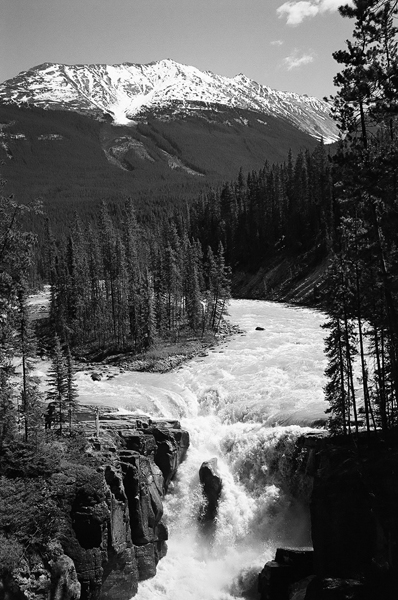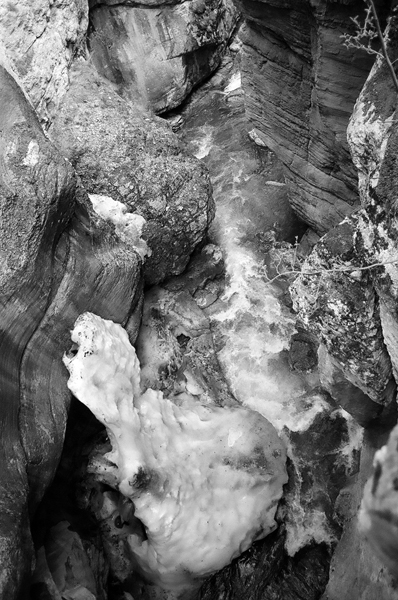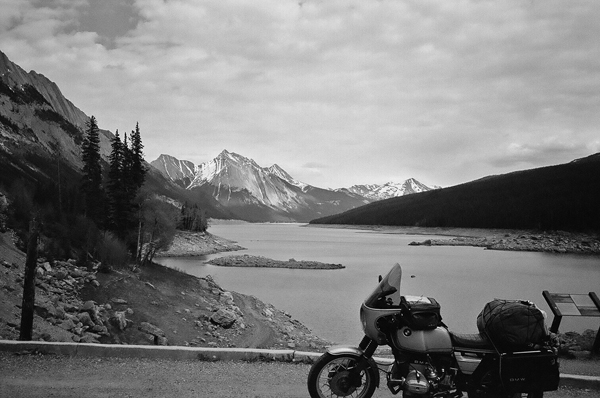Jasper was our turf today, and it continued to outdo itself like Banff had done the day before. The mountains rose up smoothly on both sides: God’s halfpipe. The wildlife was even better than we saw in Banff. The number was not as large, but the pickings were great. Later in the day we saw two black bears eating plants and also were stared at by a curious coyote.
Most of our stops centered around waterfalls. I wrote postcards to friends above the roaring power of Sunwapta Falls, wanting to share the moment with them. Athabasca Falls was at least as impressive, flowing from a rushing river onto rocks well below the footpath bridge. Following the water’s path was aesthetically interesting since the years of flowing erosion left smooth-sculpted rock chambers and curves.
Those falls were somewhat dwarfed by the dimensions and shapes of Maligne Canyon. The canyon was a thin slit in the Earth (23 feet across), yet disproportionately deep (167 feet at its deepest). A huge waterfall cut into its beginning rim and fell unimpeded into a dark, swirling lagoon below. The cascading river traveled further through the canyon walls until it all eventually broke out into a valley. One of a kind and completely unexpected.
Dad and I decided to head over to Medicine Lake and Maligne Lake before turning around and heading west out of the park. We enjoyed the winding roads as much as seeing the lakes, and the combination felt good. The Log-Tel Hotel kept us comfortable after travelling through Mount Robson Provincial Park and some road construction zones to McBride.
The signs that warned “Extreme Dust Hazard: Use Headlights” were not kidding. In fact, the construction workers let us travel ahead of the “pilot vehicle” construction truck that led everyone through at a slow pace. They realized our relative nakedness and let us go ahead of the suspended dust storm that billowed from the moving line of vehicles behind us.



